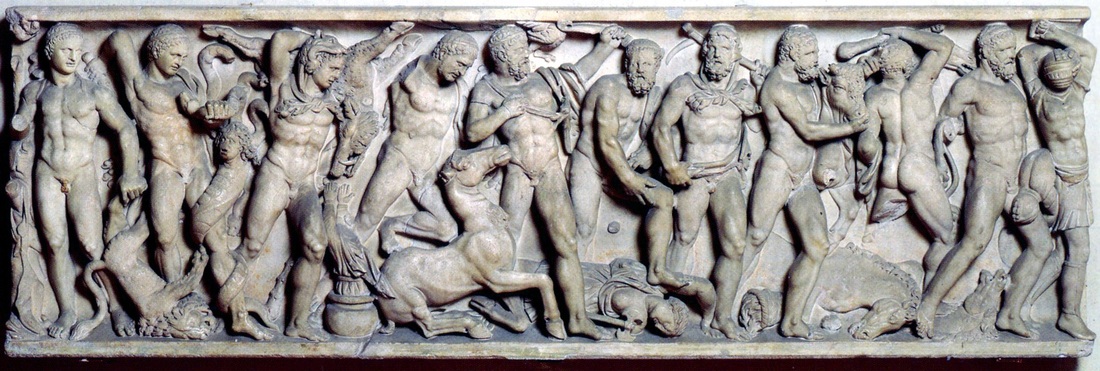|
This gorgeously carved mythological sarcophagus presents a composition so crowded that you might think it undecipherable. But once you know a few tricks of Roman visual logic, the unruly mass of bodies settles down into order. This sarcophagus stages the Twelve Labors of Hercules. Its method is to line the episodes up in a single row, with no borders separating them, and to repeat the figure of the hero himself twelve times, once for every labor. At this point you may be thinking “Twelve labors?! I only see ten.” Right you are: what we have here is simply the front slab of the sarcophagus. The two missing labors would have appeared on the coffin’s short ends (now missing). So which labors do we have on the front? From left to right, Hercules....
Many of the visual details are whimsical, even quirky. But it’s the changing state of Hercules’ facial hair that is the most interesting. Our hero stays clean-shaven for his first four labors. But then, beginning with the Stymphalian Birds, he suddenly sprouts a beard, and sports it during his remaining exploits. What to make of this? It’s tempting to joke that his labors simply left him too busy to shave. But that doesn’t quite capture the purpose of this artistic device. The progression from baby-faced to bearded hero serves, above all, as a concise way to indicate time’s long passage. The labors took twelve years to complete, occupying the better part of Hercules’ adult life. The development of his facial hair thus indicates the direction of the narrative and tracks the progression of time, rendering it visible within the static and immobile terms of carved stone. We look at another Hercules sarcophagus in our next post: Why does Hercules look like Uncle Rufus?
Comments warmly invited.
(Both the Facebook system below, and the traditional comment form, work dandily.) |
Roman
|


